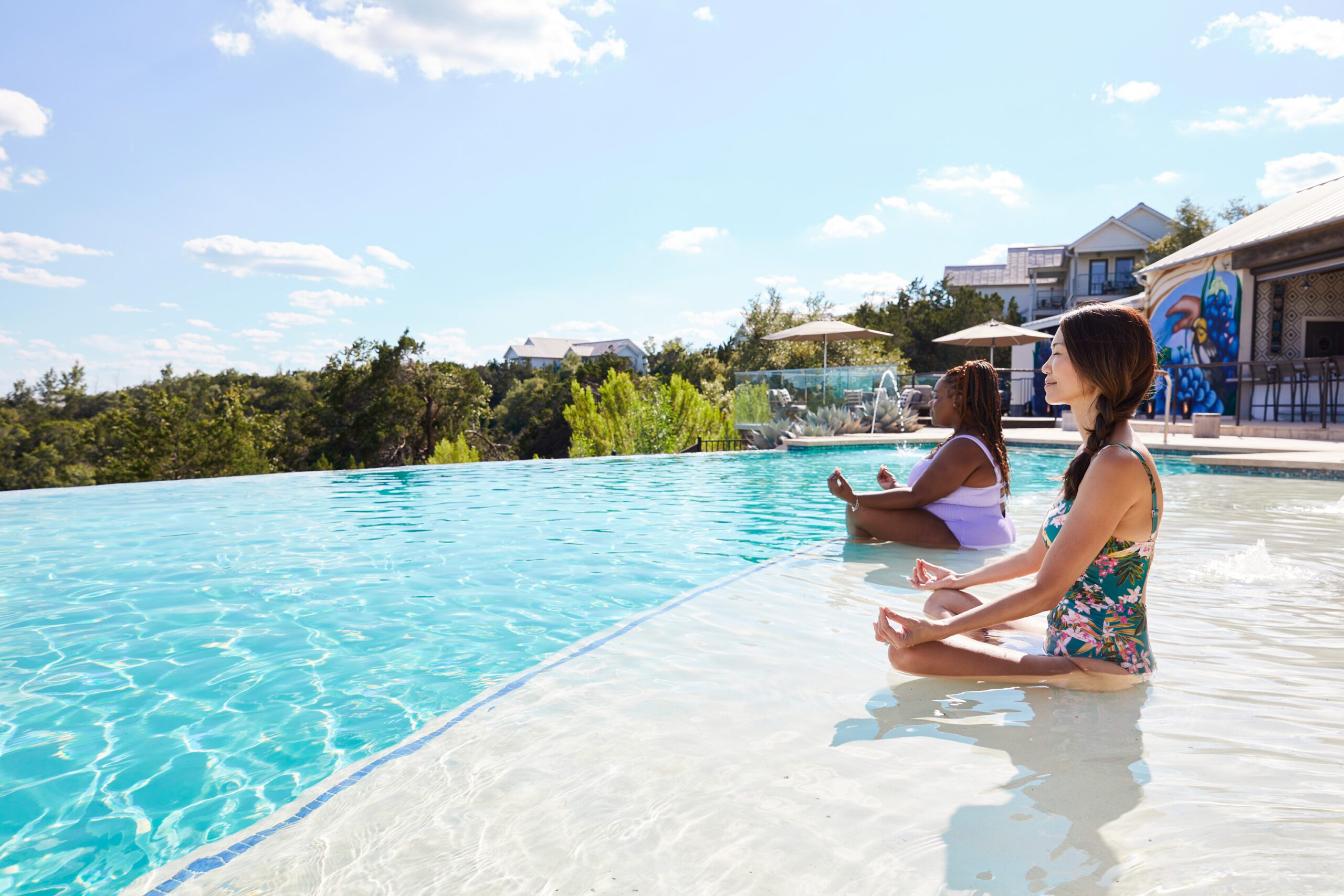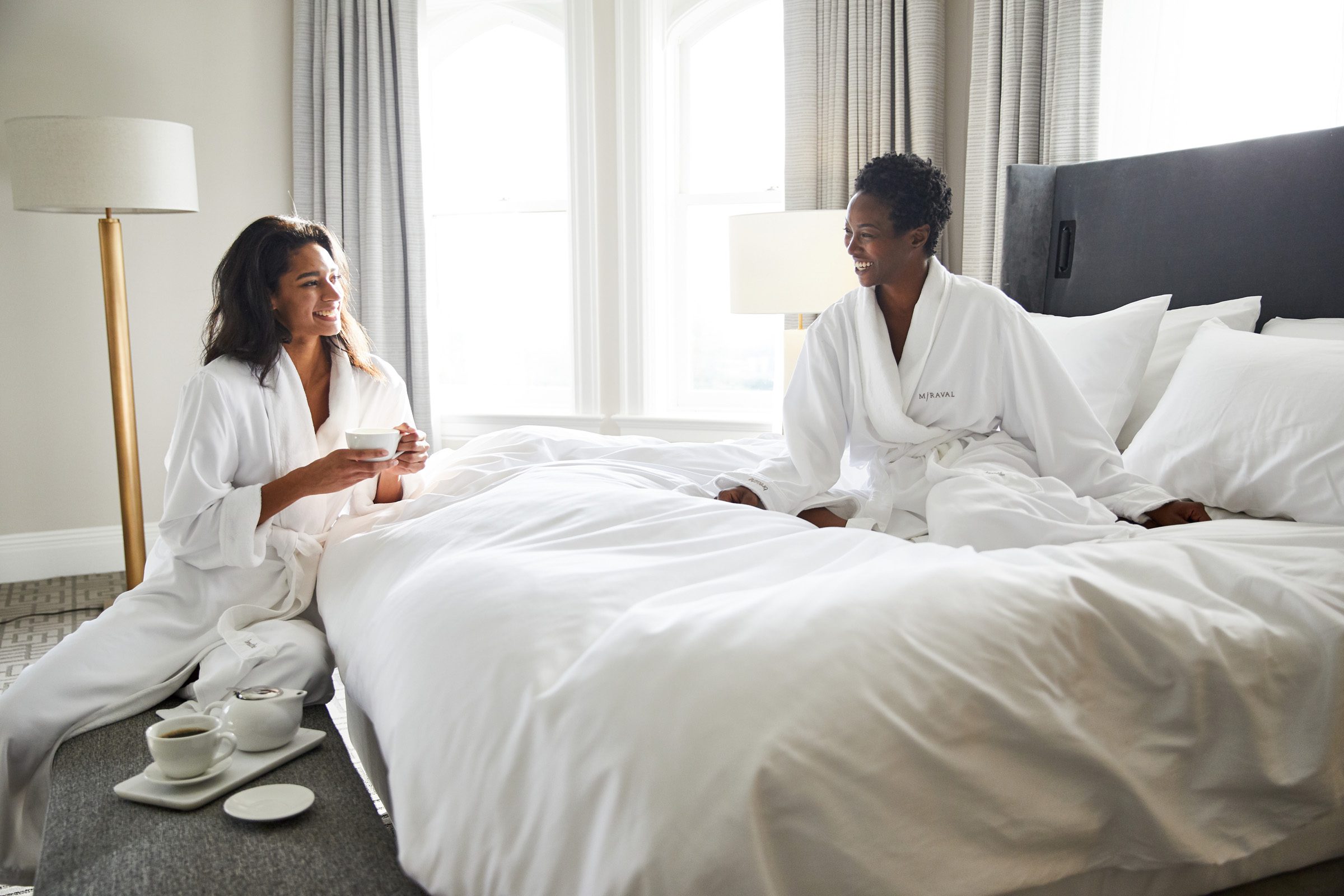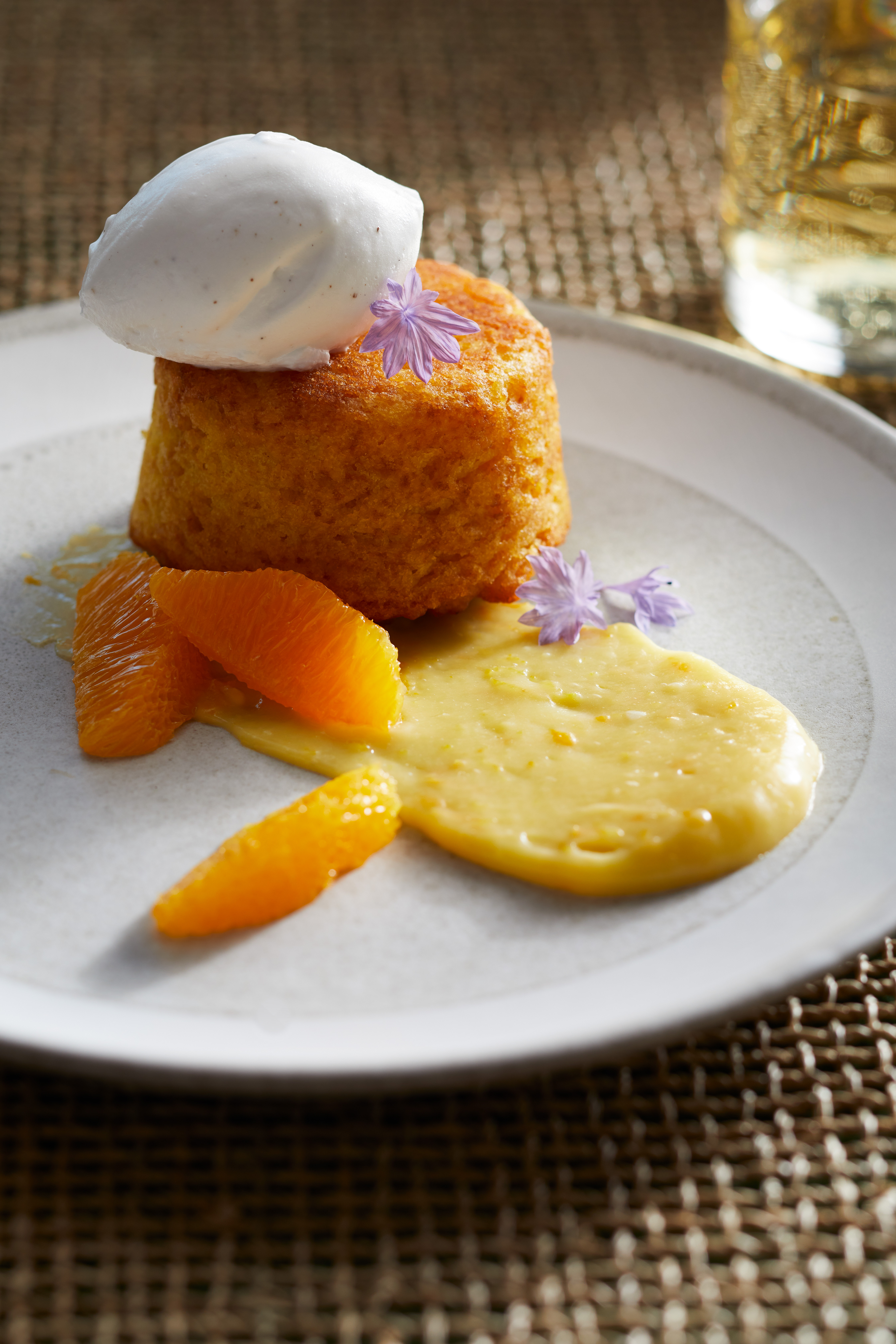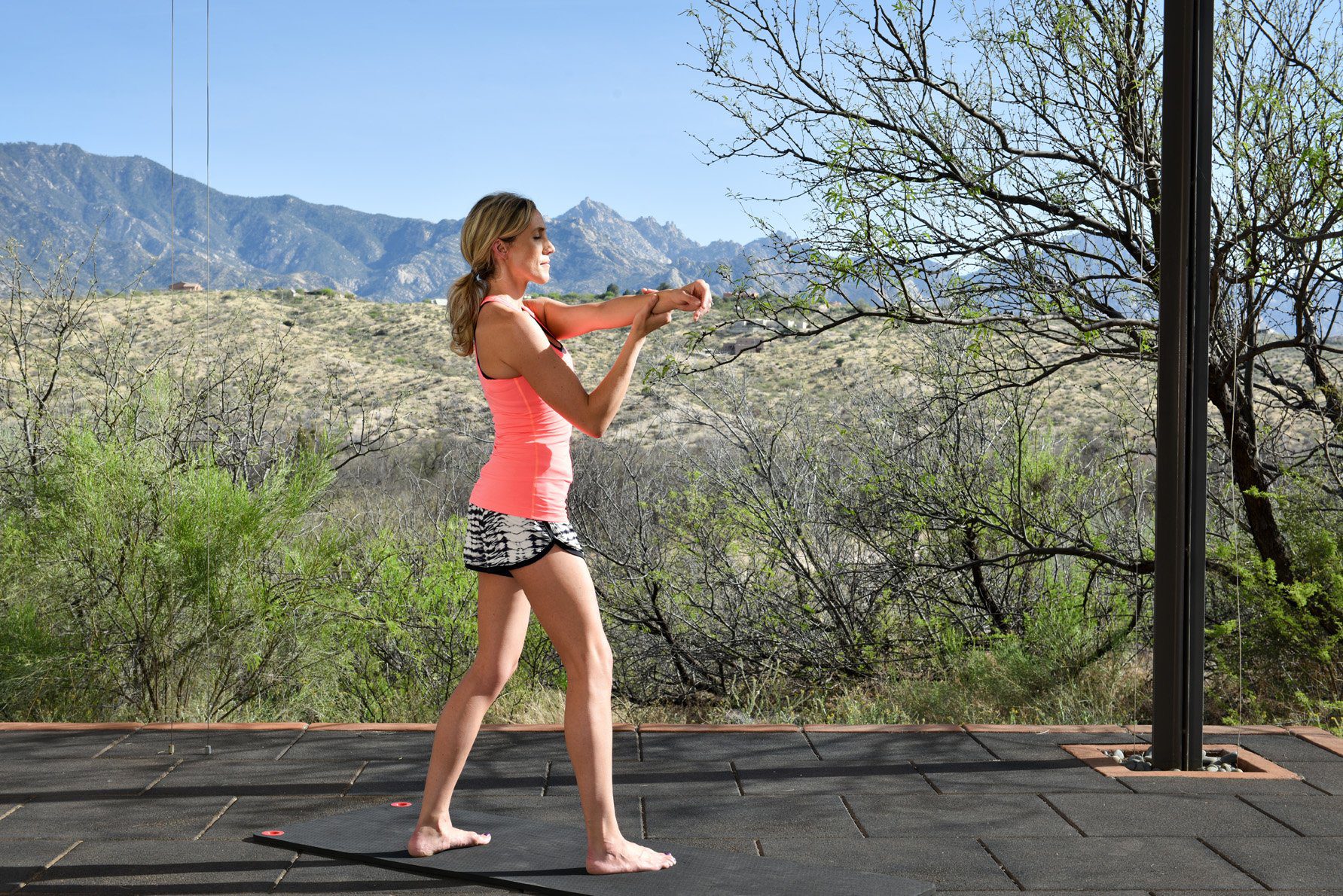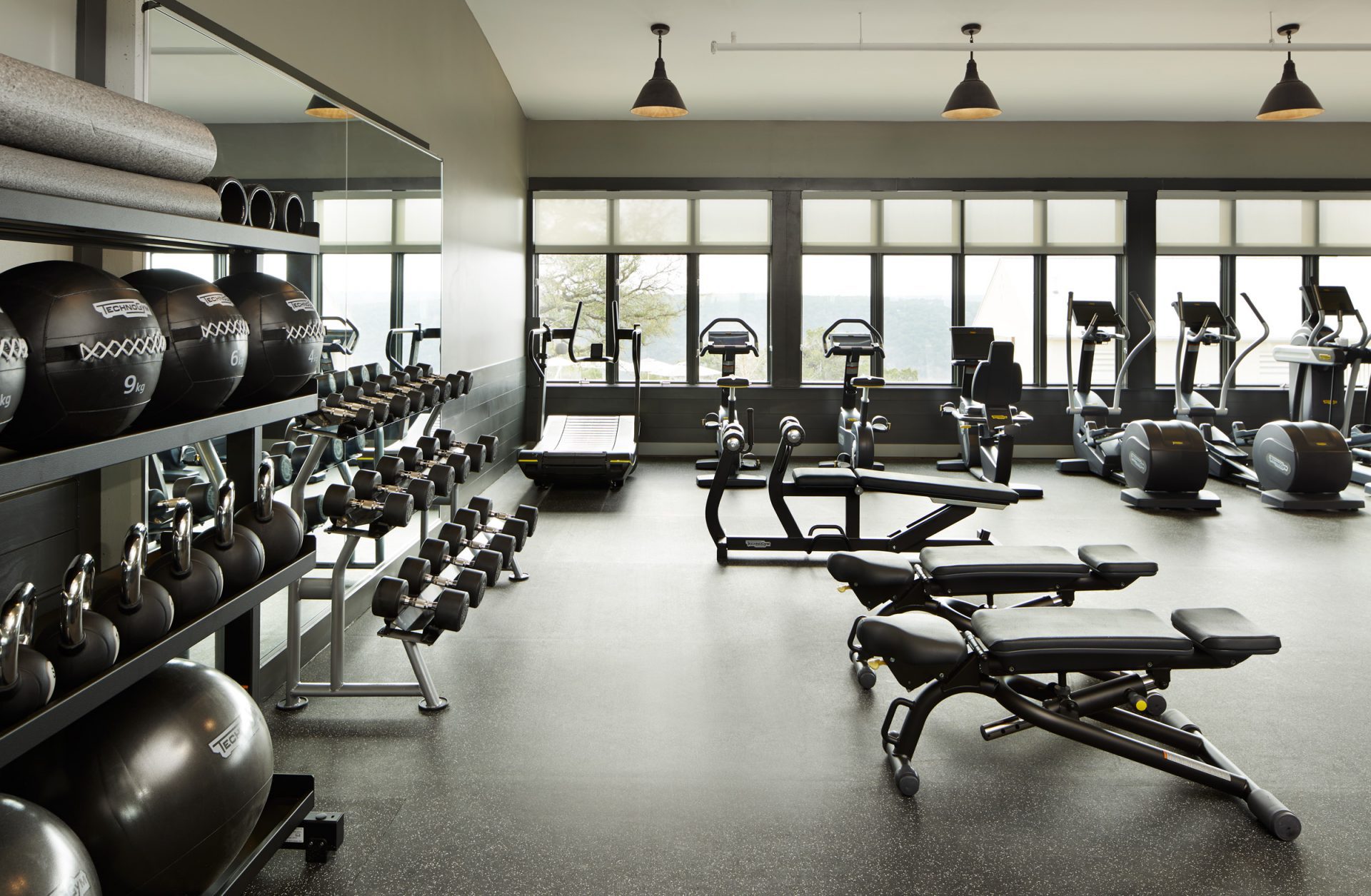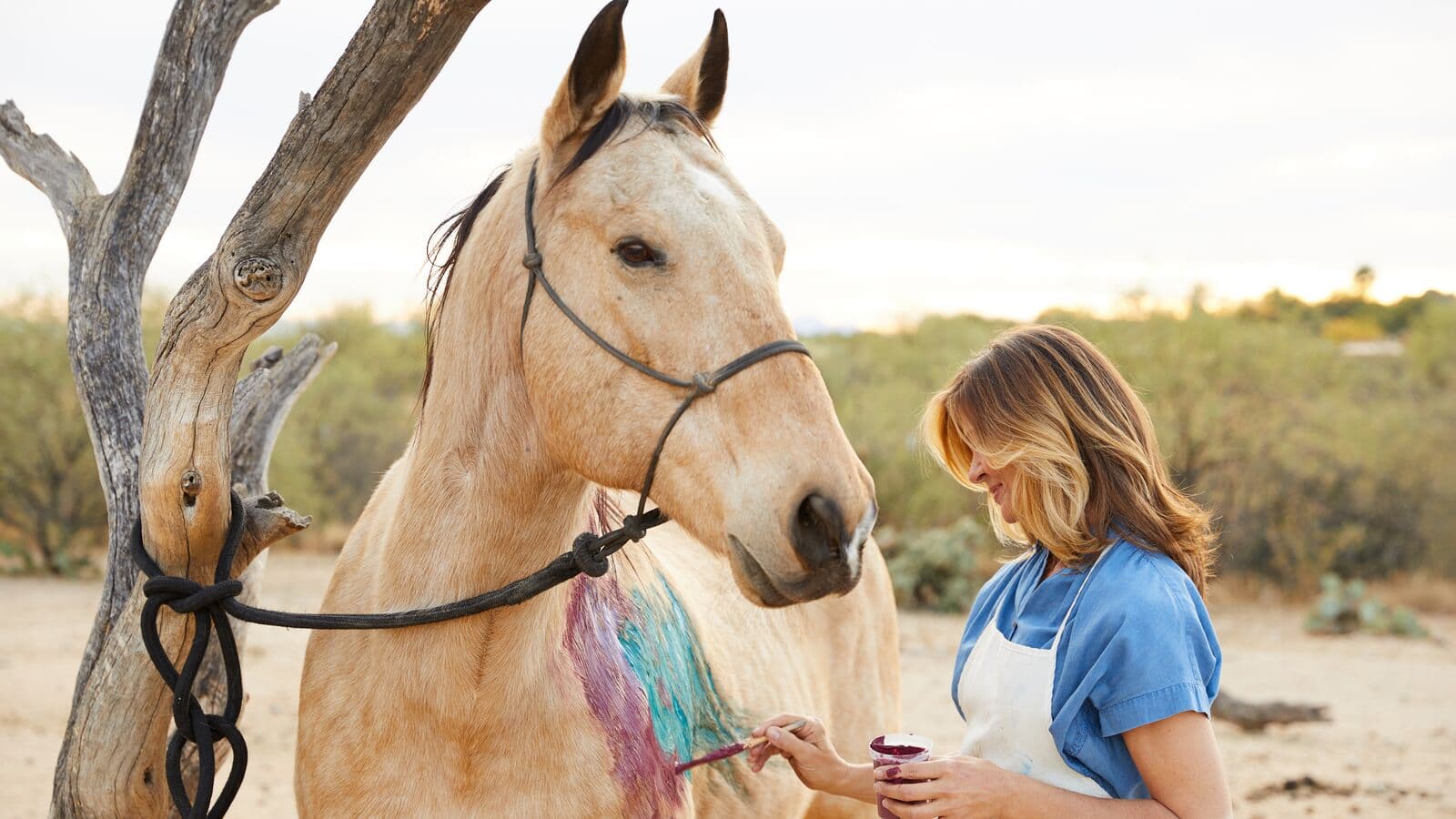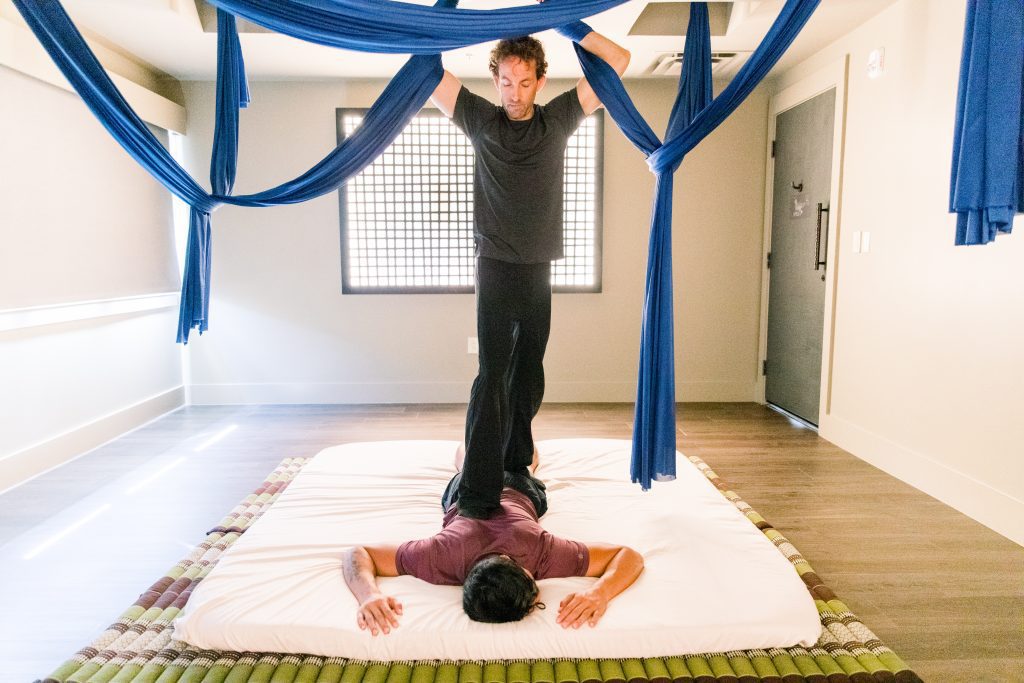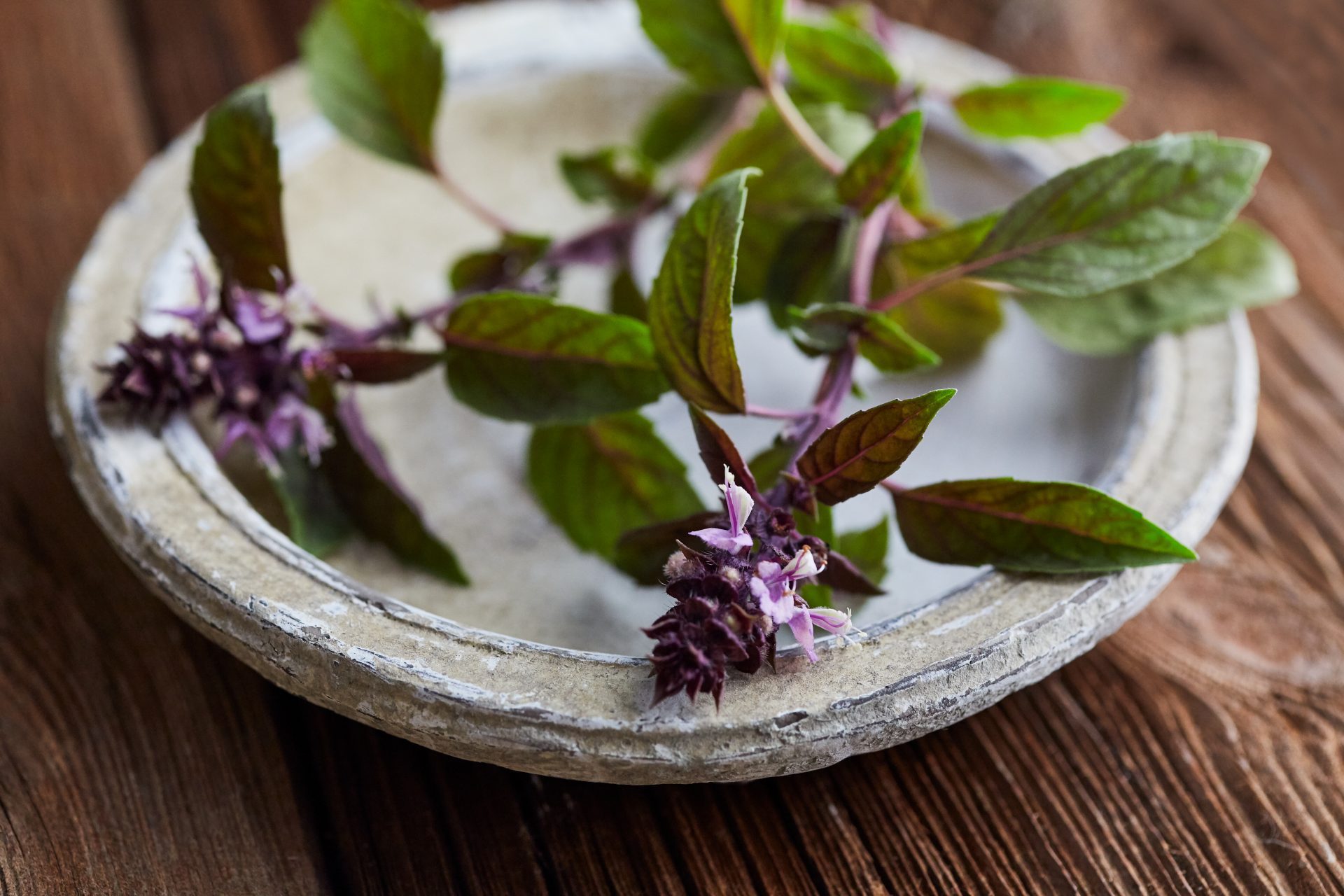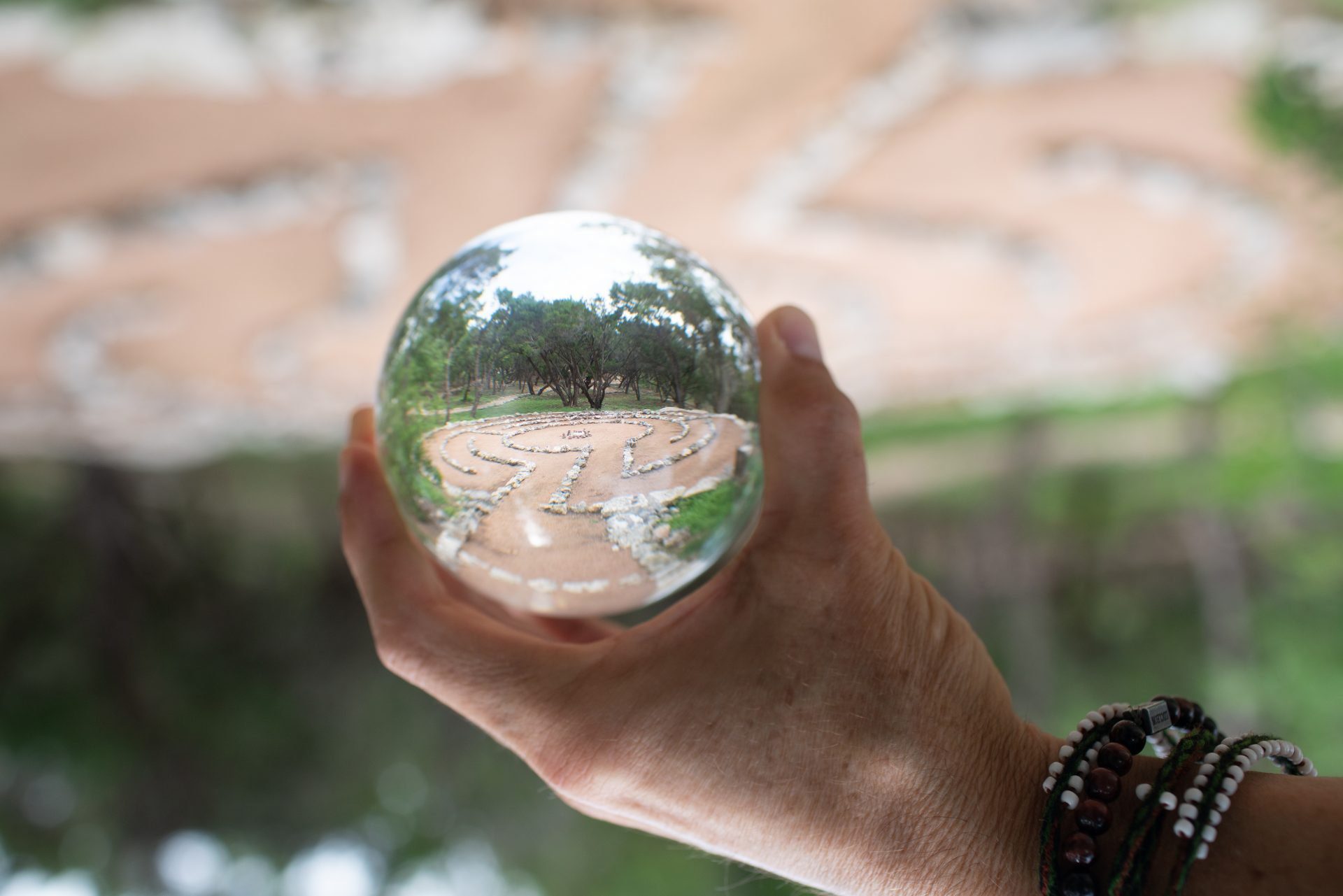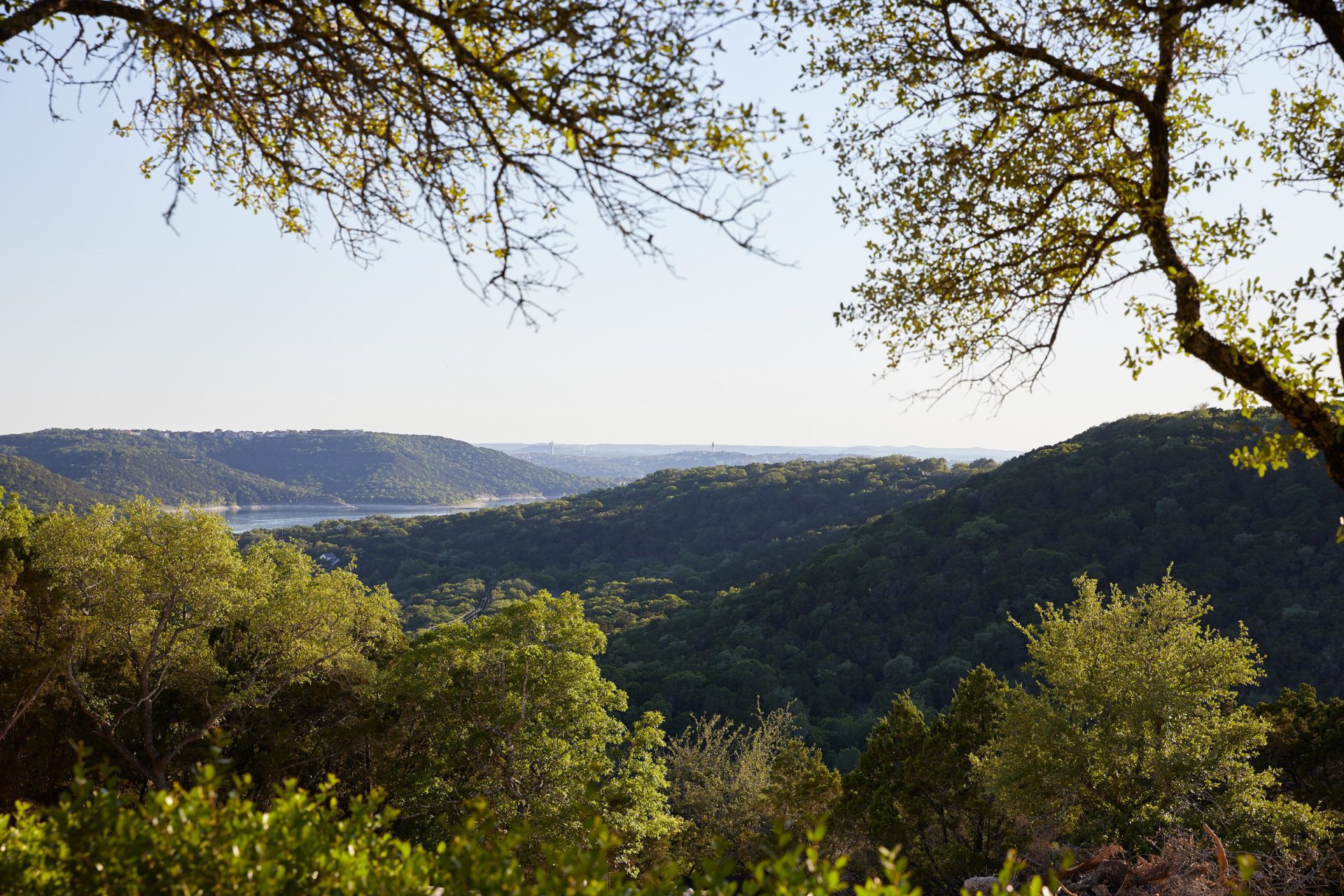Fuel Your Inner Fire
Build Resilience with Cold Immersion
As the New Year’s festivities end, January can deliver a dose of chilly gloom. How can we combat the dreaded winter blues?
Miraval Berkshires Specialist Mark Gerow suggests embracing the cold. We can take a plunge and brace ourselves with breath and mindset to thaw out from within. I spoke with him recently to wrap my head around this seemingly paradoxical thought to learn how we can adapt by settling into the cold.
Cold Immersion Therapy rests on three primary pillars:
- We apply deep breathing to prepare the body for optimal healing and results.
- We practice mindset meditation to keep the mind aware of the mental and nervous system processes accompanying our flight-or-fight response to stress.
- The cold serves as a teacher by moving the body through a voluntary stressful experience and allowing it to self-regulate.
This process helps us build resilience, balance immunity, increase cardiovascular fitness, and much more.
“Is it,” I ask Mark, “the best idea to launch this class during the coldest time of the year? Wouldn’t it be better if we just took a class on how to sip hot chocolate under a warm blanket? Isn’t immersing myself in the cold the opposite of warming up?”
“Sure,” says Mark. “I don’t like the cold either. But I go into it because it works. I go into frigid rivers, icy lakes, or cold showers because it can combat despair. The cold can be your teacher.”
So, instead of throwing a blanket over my head, I will consider diving headfirst into the cold at Miraval Berkshires.
Some guests only visualize going in, some jump in and out immediately, and some stay longer to feel the full effect. This alternative approach uses breath, nature, and meditation to let the body self-regulate and build a mental tolerance to discomfort.
“We keep everyone very safe,” Mark explains, “with a layered approach.”

In Scandinavian countries, where it’s dark so much of the time, the concept of coziness, or Hygge, offers contentment: steaming mugs of warmth, fuzzy blankets, glowy candles. That’s one side of a solution to feelings of isolation and darkness – the other side is more difficult but might have longer-lasting effects.
What’s the opposite of Hygge? The Norwegian word Uhygge, meaning discomfort or unease. Whether we like it or not, staying in an unpleasant moment could be the best thing we can do. Another way to think about it is the concept of hormesis, which is the application of voluntary stress to strengthen the immune system, mind, and body.
“But,” I ask Mark, “Isn’t stress the thing we don’t want? Isn’t that why we come to a place like Miraval? To get away from stress?”
Yes and no, he explains. Hormetic stress can be a good thing when practiced correctly. It can even diminish unhealthy stress with small, incremental changes. Sitting with our stuff—fears, traumas, complicated feelings, worries, physical pain—is hard. As humans, we try to move away from it. Stuff is arduous.
“As a society,” Mark explains, “we have gone down this road of not letting the body find the answers, not sitting with discomfort and allowing it to shift. By distracting ourselves with creature comforts, we might be keeping ourselves from coming to terms with what is trying to show itself and come to the surface for metabolizing and shifting.”
We keep ourselves impossibly busy to convince ourselves that we are productive. But busyness, Mark cautions, could be an avoidance tactic that yields diminishing returns. When we move through life automatically, with speed instead of consideration, we suspend our inner processes, intuition, and instincts.
Fuel Your Inner Fire
Ironically, it can take something like extreme cold to shift us out of our frozen states. Being uncomfortably frosty for short periods unlocks a multitude of other benefits.
It even activates the production of something called brown adipose fat. Babies don’t have muscles at birth and can’t shiver, so their brown fat radiates heat and warms their little bodies. As adults, we have mostly white fat (the kind that makes our jeans too tight) and very little good brown fat, which stimulates our metabolism to regulate our temperature.
This process can help us lose weight, strengthen our immune systems, and give us that warm, Hygge feeling from the inside out.
The Cold Hole
Mark ended up stumbling into cold immersion therapy almost by accident.
“It came to me during a time of deep, deep sadness. I was wrapped in a blanket on the couch, unable to get up. I was weeping and having dark thoughts. I asked myself, “Where do these feelings live?” The answer that came was, “In my body.” I knew if I wanted to move emotions along, I had to move this body. People who don’t understand depression might say something like: Just go to the gym. Run it off.
But I couldn’t get one foot off the couch, much less go to the gym. Doing a two-minute qigong was monumental. Holding a chair pose for 15 seconds put me in tears. I noticed that after I held that pose and released it—as difficult as that was—something shifted inside. I knew I had to find my way through.
I found the cold through the random act of a living art project called The Cold Hole. You had to spend 30 minutes in an ice-covered room that had a hole in the middle holding freezing water. People watched and waited, separated by a plexiglass divider, and I had no idea what to do.I got more and more nervous. I walked around on the ice, questions racing in my head: How cold would the water be? Would I die in the cold? Finally, I dove in and came shooting back out. My body’s response was: this is amazing!
I went back and stayed in for a little while and got out. The rest of the day, I was on fire. My body was warm; I felt energized, I felt good about life and thought, there is something to this. I’m going to have to investigate. I started studying with Wim Hof and his program to learn about the science of it. It is difficult, but when you allow your physiology to give you the answers, it can be incredibly powerful.” – Mark Gerow, Spiritual Coach & Outdoor Guide
Trust the Body
Alongside tools like breathwork and meditation, cold immersion therapy can spark your inner kindling and ignite a practice of presence and resilience.
Your body’s first response to hormetic stress might be similar to the smoke alarm going off in your kitchen when you use the stove. If our initial reaction every time it went off were “we’re going down in flames!” we would never attempt to cook again. We rule out a real disaster, turn off the alarm, and continue with our meal.
We are so used to thinking that our bodies betray us, but they are pretty sensible. They have a remarkable ability to self-regulate. The body pulls the fire alarm when it senses we are not leaving the building that might or might not be ablaze. When we don’t leave it (because it’s not actually on fire), the body shifts and prepares us to hunker down and stay. It realizes something else is happening—and it might not be bad.
Now, close your eyes and imagine getting into a freezing shower or an icy pool of water. Your internal alarm might start to scream. If you enter that cold, you might respond with a gasping sharp inhale, tightened muscles, and a shot of adrenaline meant to get you out of danger.
But if we pause inside all that noise, we can recognize reality and assess the danger. Is it imagined, or is it real? Once we figure out it’s not real, we can sit with it. It only takes about 75-90 seconds for our physiology to change and downshift our bodily response.
After that, our fire-alarm brain adjusts to our new reality—the cold water, the uncomfortable place, the bad memory. It shifts to a new strategy of slowing things down to protect our vital organs. Blood pressure and heart rate go down. We begin to conserve energy and get very still, quiet, and connected to the moment. Suddenly, it feels very tolerable.
“Yesterday, before I even entered the cold water, I thought about what it would feel like when I went in. There would be sharp feelings around my body, the cold would hit me, and I would want to take this big surge of breath in. But instead, I anchored to my exhale, noticed my feelings, and realized that they were not aligned with reality: I was in no imminent danger. Then I thought, if I can stay here for 75 seconds, everything will change. This moment is temporary.”
– Mark Gerow
Rethink the Breath
When our brains sense danger, we inhale sharply, and our heart rate goes up. We tend to hyperventilate, each breath growing more rapid. It’s an extreme response when you need oxygen right now. Sometimes we hold that breath and freeze. Other times we gulp more air and fight.
When we lengthen the exhale, carbon dioxide builds, and that’s calming. When we notice our response, we can step back and engage the breath. We can exhale and become still with the mind. Our thoughts interact and intertwine with our subsequent actions. We have the power to change mental states by focusing our conscious awareness and anchoring it with our breath.
“The more you encounter and embrace uncomfortable feelings and sensations,” Mark says, “the better equipped you are to handle them. There is so much that has happened to us in the last two years. We suppress things because we don’t have the bandwidth to process things in real-time. We compartmentalize, and down into the body it goes. We have tension; we can’t sleep.”
Let’s say you’re sitting with an emotion in meditation— really leaning in and turning towards it until your conscious mind is aware of where in your body it lives and how it feels. Mark finds that as soon as he turns toward an uncomfortable thing, it shifts. “If I move away from it,” he maintains, “it just looms larger. What you resist persists. It just keeps chasing you, like the bully in the playground. But if you turn towards the bully, that relationship changes immediately. As soon as you embrace those uncomfortable feelings in meditation—or at the edge of the cold shower that you’re ready to enter—something changes.”
As I prepare for my upcoming Miraval Berkshires immersion, I remind myself that this remarkable and empowering concept is based on self-trust and the conviction that we are resilient beings. As one of our most famous New England poets, Robert Frost, put it: “The best way out is always through.”
Bring Miraval Home: A Daily Practice
Before trying the exercise below, remember to trust what Mark calls your inner guiding intelligence. “It’s built-in,” he says. “It will only process what you can handle today. Let’s trust that intuitive part of ourselves that remembers how to be in our bodies.”
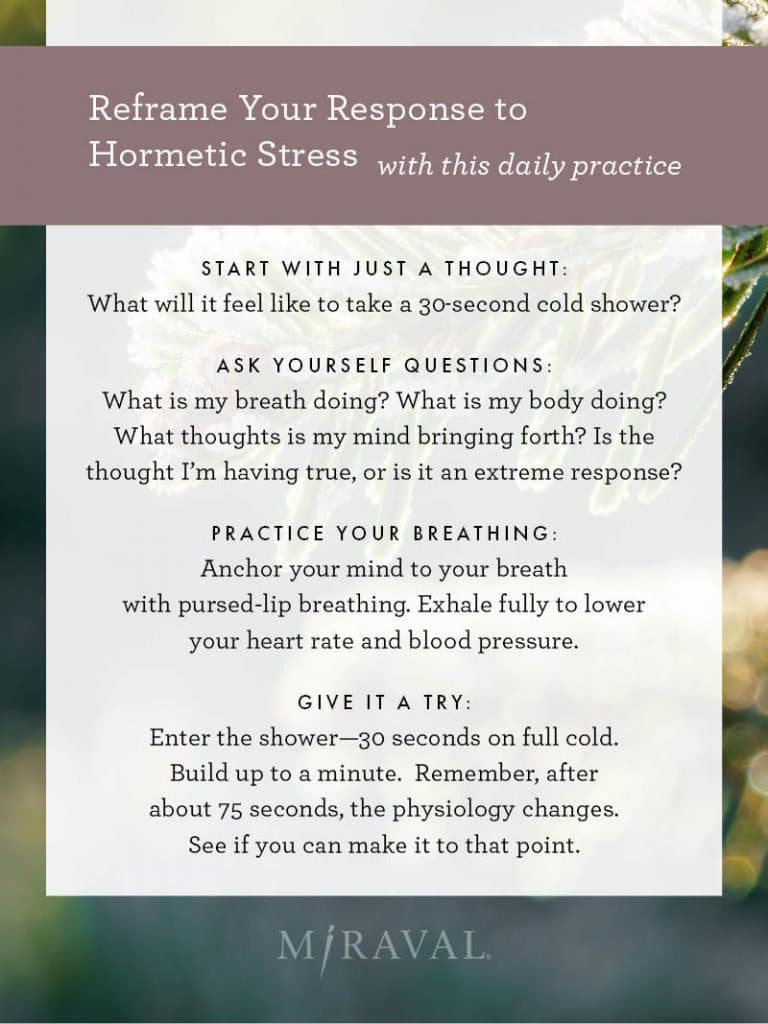
Source material provided by Mark Gerow, Miraval Berkshires Spiritual Coach & Outdoor Guide.
For more information about Miraval Resorts & Spas or to book a visit, please visit www.miravalresorts.com or call (855) 335-8999.






